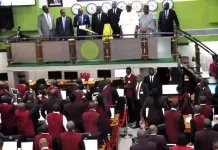The British Pound Sterling, on Monday, July 3, dropped below $1.30 after weaker-than-expected data from Britain’s manufacturing sector led investors to think twice about whether the Bank of England will raise interest rates this year.
Sterling reacted by falling to $1.2962, down half a percent on the day, having earlier traded as strongly as $1.3025 after hitting a six-week high of $1.3030 on Friday on bets that the BoE would hike interest rates in the coming months.
The latest purchasing managers’ index (PMI) showed British factory activity grew much more slowly than forecast in June, with export orders rising at the weakest pace in five months. Activity fell to 54.3 from a downwardly revised 56.3 in May – a three-month low and below all forecasts in a Reuters poll.
The data suggested that the supposed silver lining of a currency weakened by Britain’s vote to leave the European Union last year – more competitive exports – is proving elusive.
“UK manufacturing fell off the cliff and it clearly shows that economy is not doing well at all,” said Naeem Aslam, analyst at Think Markets.
“The weaker sterling is not helping the manufacturing sector because consumers have tightened their belt, and wage growth is awful. The focus will be on the services PMI data which is due on Wednesday.”
Last week, the pound recorded its best weekly performance against the dollar in almost eight months, climbing almost 2.5 percent after BoE Governor Mark Carney said a rate rise was likely to be needed as the economy came closer to full capacity.
For the quarter, sterling’s performance was its best in two years, benefiting from broad dollar weakness as U.S. economic data disappointed and as investors’ hopes for pro-business, pro-growth policies from President Donald Trump faded.










